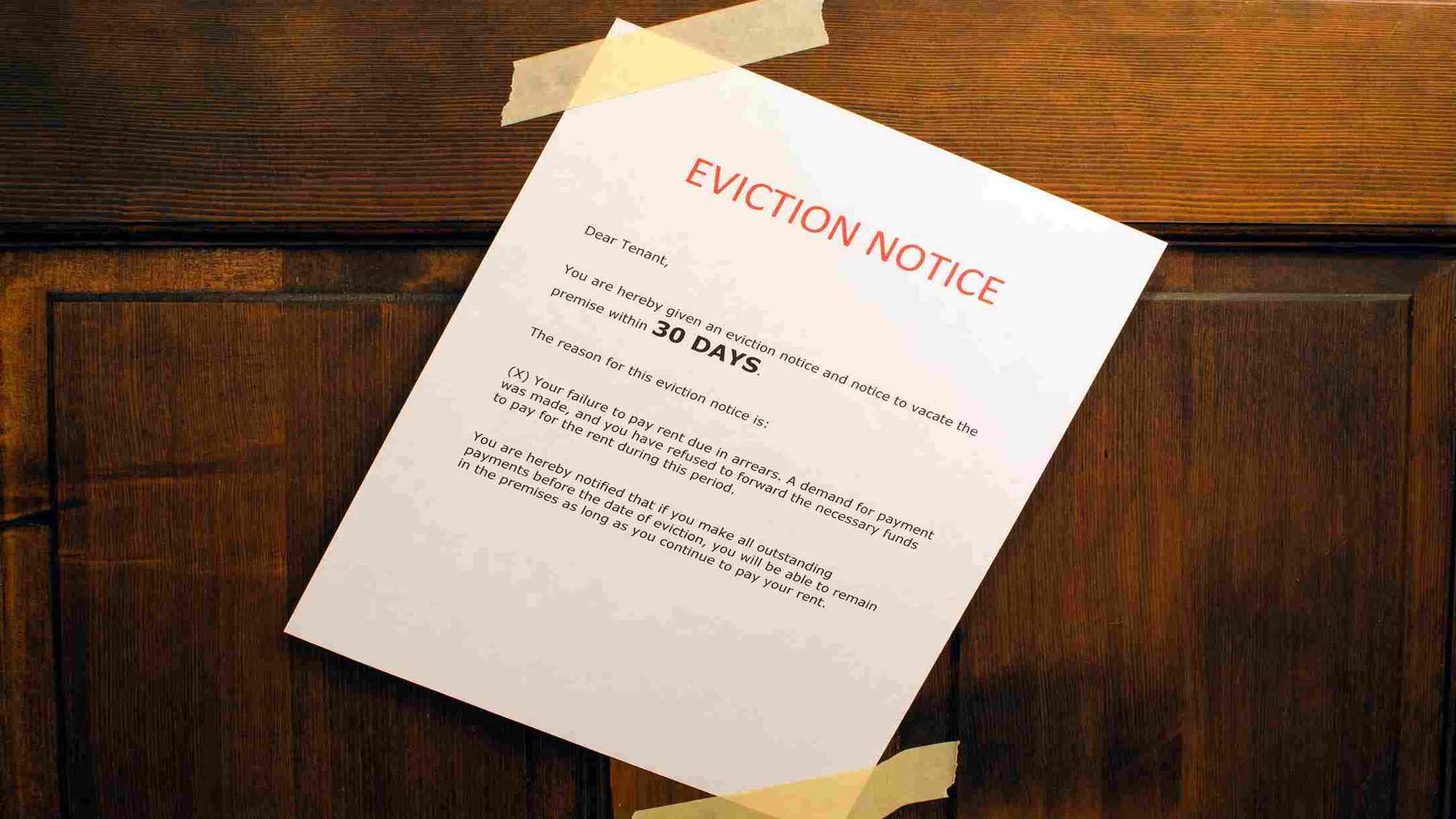
Who has the right to stay on a property? This question can lead to intense debates and legal disputes. Indiana squatter rights, often misunderstood yet firmly rooted in legal frameworks and rental agreements, continue to evolve. This article dives into the latest Indiana squatting laws and updates for 2025, offering clarity on your landlord rights and processes you need to know.
What Are Squatter Rights in Indiana?
Squatter rights in Indiana are legal protections that allow individuals who occupy a property without the landlords’ permission to claim ownership under certain conditions. These rights are rooted in the concept of adverse possession, a legal principle that permits someone to gain ownership of land if they meet specific requirements over a defined period.
While the idea may seem surprising, adverse possession serves a practical purpose in ensuring that land is not left idle or neglected. Indiana squatter rights can only be established under stringent legal guidelines, making it essential to grasp the key requirements. Additionally, disputes involving squatters may sometimes intersect with issues such as tenant agreements, eviction processes, and security deposits.
Key Requirements for Adverse Possession in Indiana
To successfully claim adverse possession in Indiana, a squatter must meet the following criteria:
- Exclusive possession: The squatter must have sole physical control of the property, excluding anyone else, including the legal owner. Shared possession with others, including the owner, disqualifies the claim.
- Continuous use for 10 years: Indiana law requires that the squatter occupy the property continuously for at least 10 years. This period must be uninterrupted; any breaks in occupancy can reset the timeline.
- Open and notorious possession: The occupation must be obvious and visible to anyone, including the property owner. The squatter cannot hide their use of the property.
- Paying property taxes: In Indiana, paying property taxes is not always required but can strengthen a claim. If the squatter pays taxes on the property during the 10-year period, it may further legitimize their adverse possession claim.
- Actual possession: The squatter must physically use the property as a landlord would. This includes actions like building structures, maintaining the land, or making improvements that demonstrate control.
Civil Squatting vs. Criminal Trespassing in Indiana Squatter Rights
The terms "squatting" and "trespassing" are often used interchangeably, but they carry distinct legal implications in Indiana. Let’s take a look at them!
What Is Civil Squatting?
Civil squatting occurs when an individual occupies a property without the owner’s permission but does so under circumstances that may lead to a legitimate claim of Indiana adverse possession. Squatting is generally not considered a criminal act because it is not inherently illegal under certain conditions.
For instance, if a person openly and continuously lives on an abandoned property and meets the legal requirements for adverse possession, they might eventually acquire legal ownership of the land. This process takes time and adherence to strict legal guidelines, such as continuous occupancy for 10 years (read above).
What is criminal trespassing?
Indiana trespass law, on the other hand, involves unlawfully entering or remaining on someone else’s property without permission. Unlike squatting, trespassing is always illegal and can result in criminal charges.
Trespassing Indiana laws are enforced when an individual knowingly enters a property after being explicitly told not to or when they refuse to leave after being asked to do so by the property owner or authorities. Common scenarios include breaking into a home, occupying a property that is not abandoned, or damaging the property during entry.
Key Differences Between Squatting and Trespassing
Overall, squatting and trespassing might seem similar at first, but their legal consequences are worlds apart.
How to Protect Your Property from Squatters? 3 Practical Steps

By taking a proactive approach, landlords can reduce the risk of squatters occupying their property. Below, we delve into practical steps, essential maintenance tips, and effective security solutions!
3 Practical Steps to Safeguard Your Property
The first line of defense against squatters is vigilance. Squatters often target abandoned or neglected properties because they feel they can remain undetected for long periods. Regularly checking on your property and ensuring that it is well-maintained and actively monitored can help you to deter these unwanted tenants.
- Regular Property Inspections
Regularly visiting your property, especially if it is vacant, sends a message to squatters that the property is actively managed. During these inspections, be on the lookout for signs of unauthorized entry such as broken locks, tampered windows, or signs of individuals living on the premises. The more frequently you inspect the property, the less likely squatters are to make it their home.
Note: Make sure to check all access points including doors, windows, gates, and any other possible entryways.
- Establish Ownership Visibility
One of the simplest but most effective steps you can take is to make sure your property is clearly marked as private. Post prominent "No Trespassing" signs in highly visible areas. In the case of an abandoned property, these signs serve as your first line of defense, establishing your landlord's rights and ownership from the outset.
Note: Place these signs to be clearly visible to anyone passing by, especially if the property is situated in a high-traffic area.
- Secure Vacant Properties Immediately
If your property becomes vacant, it is vital to act quickly to secure it. Squatters are more likely to occupy abandoned properties, and the longer you leave a property unsecured, the higher the risk. Change locks, board up windows if necessary, and add additional layers of security like deadbolts or security bars.
When securing vacant properties, ensure the appearance of the property remains maintained. Tall, unkempt grass and overgrown bushes can give the impression that no one is watching over the property.
Checklist for Property Maintenance to Prevent Squatters

Use the following checklist to keep your property in top condition:
Exterior maintenance:
- Keep the grass mowed and remove any debris or trash from around the property.
- Check any fencing or gates.
- Repair any broken sections immediately to prevent easy access.
If you’re unable to manage the property in person, hire a lawn care or property management service to take care of the upkeep.
Repair damages:
- Check for and repair any broken windows, damaged doors, or holes in fences that could provide easy access.
- Seal cracks or entry points in basements, crawlspaces, or attics.
Trash and debris removal:
- Regularly remove litter or debris from the property, as neglected spaces can attract unauthorized tenants.
Security Solutions: Cameras, Alarms, and Fencing
Technology is your best ally against squatters. With advanced security systems, you can stay one step ahead, preventing unauthorized entry.
- Install high-quality security cameras: Choose cameras with night vision, motion detection, and remote access capabilities to monitor the property in real time.
- Alarm systems: Invest in alarms that detect unauthorized entry and can alert you or local authorities immediately.
- Motion sensors: Install motion detectors around the perimeter of your property to illuminate dark areas when movement is detected. Pair them with alarms for added deterrence.
- Fencing and barriers: Install robust fencing around the property. Chain-link, wrought iron, or wooden fences with locked gates can create physical barriers to entry.
- Smart locks and remote monitoring: Upgrade to smart locks that allow you to control access remotely. These systems can notify you of any attempted breaches.
Legal Recourse for Property Owners
When squatters take up residence on your property, the process of reclaiming your space can feel overwhelming. However, understanding your legal options can resolve the issue.
Eviction Process In Indiana Squatter Rights

How to evict a squatter in Indiana?
Squatters rights 30 days Indiana do not automatically kick in after 30 days of occupying a property. However, squatters can potentially claim adverse possession after a longer period of continuous, open, and hostile occupation, typically 10 years.
That said, the idea of 30 days might stem from the eviction process, as it’s common for landlords to file for eviction if a squatter has been on their property for 30 days or more, especially if they haven't paid rent or have been living there without consent.
- Notice of Eviction: The first step in the eviction process is providing the squatter with a formal notice. In Indiana, this is typically a 10-day notice, informing the squatter that they must leave the property. If they refuse to leave, the next step involves filing a complaint with the court.
- Court Proceedings: After the notice period has expired, the property owner must file a formal eviction lawsuit (also known as a "forcible entry and detainer" lawsuit) in the local court. This initiates the legal process to remove the squatter. A hearing will be scheduled, and the property owner must present evidence that the squatter is unlawfully occupying the property.
- Judgment and Writ of Possession: If the court rules in favor of the property owner, a "Writ of Possession" will be issued. This document authorizes law enforcement to remove the squatter from the property. The sheriff will serve the writ and physically remove the squatter if they refuse to leave voluntarily.
- Additional Considerations: It’s important to note that the eviction process can take time. Property owners should avoid taking matters into their own hands by physically removing squatters themselves, as this can lead to legal issues.
Seeking Legal Assistance
While the eviction process in Indiana is relatively straightforward, it’s often beneficial to consult with an attorney to confirm that everything goes smoothly. Legal professionals who specialize in Indiana squatting laws can guide you through the complex steps and help prevent any missteps that could delay the process.
While it may not always be necessary to hire a lawyer from the start, it’s wise to consult one if squatters refuse to leave after the eviction notice or if the situation escalates. Legal experts can help prepare you for court and represent your interests in front of a judge. Additionally, if squatters have made any claims of ownership or are resisting removal, legal assistance can provide the necessary support to ensure a successful eviction.
Recent Legislative Updates in 2025 Of Indiana Squatter Rights
Indiana lawmakers have introduced new bills in 2025 to further protect Indiana squatter rights and clarify the legal processes surrounding squatting. Two key pieces of legislation that have been introduced to address squatting issues are Senate Bill 157 and Senate Bill 12.
Senate Bill 157: Protection of Property Rights
Senate Bill 157 focuses on enhancing the protection of property rights in Indiana by introducing stricter measures for preventing Indiana adverse possession claims. This bill specifically targets the issue of squatters who attempt to claim ownership of property through long-term, unauthorized occupation.
Key Highlights of Senate Bill 157:
- Tightens the requirements for adverse possession, making it more difficult for squatters to gain legal ownership.
- Offers clearer definitions of "lawful possession," ensuring property owners can reclaim their Indiana squatter rights with greater ease.
- Introduces penalties for fraudulent claims of ownership, aiming to deter individuals from attempting to gain property through unlawful occupation.
Senate Bill 12: Removal of Squatters
Senate Bill 12 addresses the legal procedures surrounding the squatter removal of Indiana from a property.
Key Highlights of Senate Bill 12:
- Expedited eviction process for squatters, with a specific focus on reducing the time it takes to remove individuals who have unlawfully occupied a property.
- Establishment of clear guidelines for law enforcement agencies.
- Imposes fines and penalties for those found guilty of occupying property without permission, discouraging squatting as a potential legal loophole.
Conclusion
With LeaseRunner’s regular updates on laws and regulations, landlords can focus on managing their properties while staying ahead of legal requirements. Senate Bill 157 and Senate Bill 12 offer much-needed clarity and stronger protections for landowners. As a property owner, staying ahead of Indiana squatter rights through legal action and proactive measures is essential to maintaining control of your property.
Frequently Asked Questions (FAQs)
Q1. Do squatters have rights in Indiana?
Yes, squatters in Indiana can potentially claim certain Indiana squatter rights through the legal doctrine of adverse possession. However, these tenant rights are limited and require a long period of continuous, open, and hostile possession. Landlords can take legal action to remove squatters and prevent adverse possession claims if the necessary conditions aren’t met.
Q2. How long before squatter rights kick in?
In Indiana squatter rights, squatters can potentially claim adverse possession after occupying a property for at least 10 years under specific conditions, including continuous, open, and hostile use of the land.
Q3. Can police remove squatters in Indiana?
No, police cannot remove squatters unless they are involved in criminal activities or have violated other Indiana laws. Eviction of squatters is a civil matter, and property owners must go through the legal eviction process in court. Police can assist in enforcing court orders, such as a Writ of Possession, after the eviction is granted.
Q4. How do you file adverse possession in Indiana?
To file an adverse possession claim in Indiana, a squatter must prove that they have occupied the property continuously, openly, and without permission for a period of at least 10 years. The squatter must file a claim in the local county court to begin the process. This is a complex legal procedure.
Q5. What is the difference between squatting and trespassing?
Squatting occurs when someone occupies a property without permission, with the intention of claiming it as their own through adverse possession over time. Indiana trespass law, on the other hand, is when someone enters or remains on a property without the owner's consent, but without any intention of claiming ownership.


